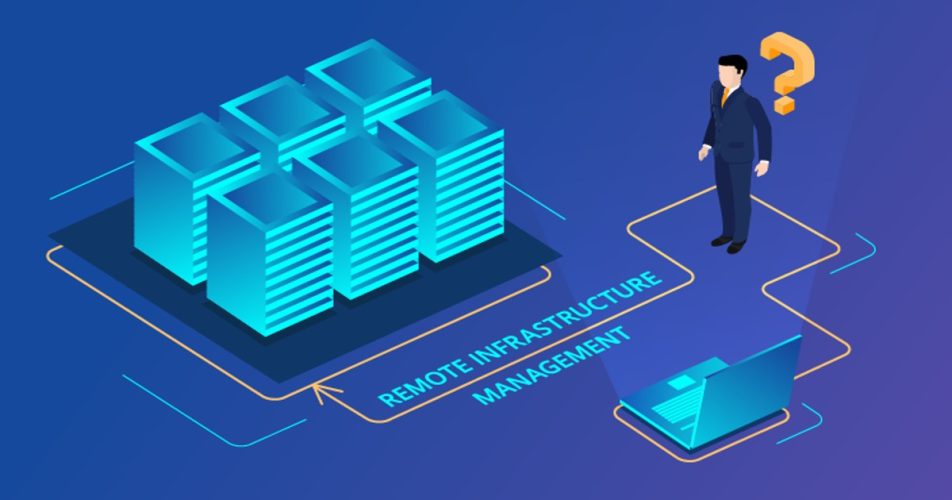What are the Challenges in Remote Infrastructure Management?

The network infrastructure at the remote location cannot be prioritized Proper visibility is given to the team The communication gap between the remote infrastructure management team and the client needs to be bridged. The time zone difference has to be taken care of The tools that are deployed for remote infrastructure management need to be checked for their effectiveness Using standard methods for problem-solving has to be ensured by the team There should also be policies that should be followed with regards to any changes in the network infrastructure at a remote location.
Remote infrastructure management services is the process of monitoring and managing all elements of enterprise infrastructure from a remote location. This can include servers, storage, networks, applications, and more.
However, there are also Some Challenges associated with RIM, such as:
- Security: RIM can increase the risk of security breaches, as IT teams need to have access to sensitive data from remote locations.
- Compliance: RIM can make it difficult to comply with regulations, as businesses need to ensure that their data is being managed in a secure and compliant manner.
- Complexity: RIM can be complex to implement and manage, as businesses need to have the right tools and processes in place.
TI Infotech is a leading provider of RIM services which has proven track record of helping businesses to overcome the challenges of RIM and achieve their IT goals. We offer a comprehensive suite of RIM services, including:
- Monitoring and Alerting: TI Infotech’s monitoring and alerting services help businesses to identify and resolve problems before they impact users.
- Patch Management: TI Infotech’s patch management services help businesses to keep their software up-to-date and secure.
- Security: TI Infotech’s security services help businesses to protect their data from unauthorized access.
- Compliance: TI Infotech’s compliance services help businesses to ensure that their data is being managed in a secure and compliant manner.
RIM can offer a number of Benefits, such as:
- Reduced Costs: RIM can help to reduce IT costs by eliminating the need for on-site IT staff.
- Increased Flexibility: RIM allows IT teams to manage infrastructure from anywhere in the world, which can be especially beneficial for businesses with a global footprint.
- Improved Uptime: RIM can help to improve uptime by identifying and resolving problems before they impact users.
If you are looking for a reliable and experienced provider of RIM services, then TI Infotech is the right choice for you. TI Infotech can help you to overcome the challenges of RIM and achieve your IT goals.
Here are Some Additional Benefits of using TI Infotech for RIM:
- TI Infotech has a deep understanding of the challenges of RIM and the best practices for overcoming them.
- TI Infotech uses the latest technologies and tools to ensure that your infrastructure is monitored and managed effectively.
- TI Infotech has a team of experienced and certified engineers who are dedicated to providing you with the best possible service.
If you are interested in learning more about how TI Infotech can help you with RIM, please contact us today. Our Infra team helps in managing the infrastructure lifecycle via secured delivery channels. Our services range from planning to deployment along with ongoing technical support anytime.
